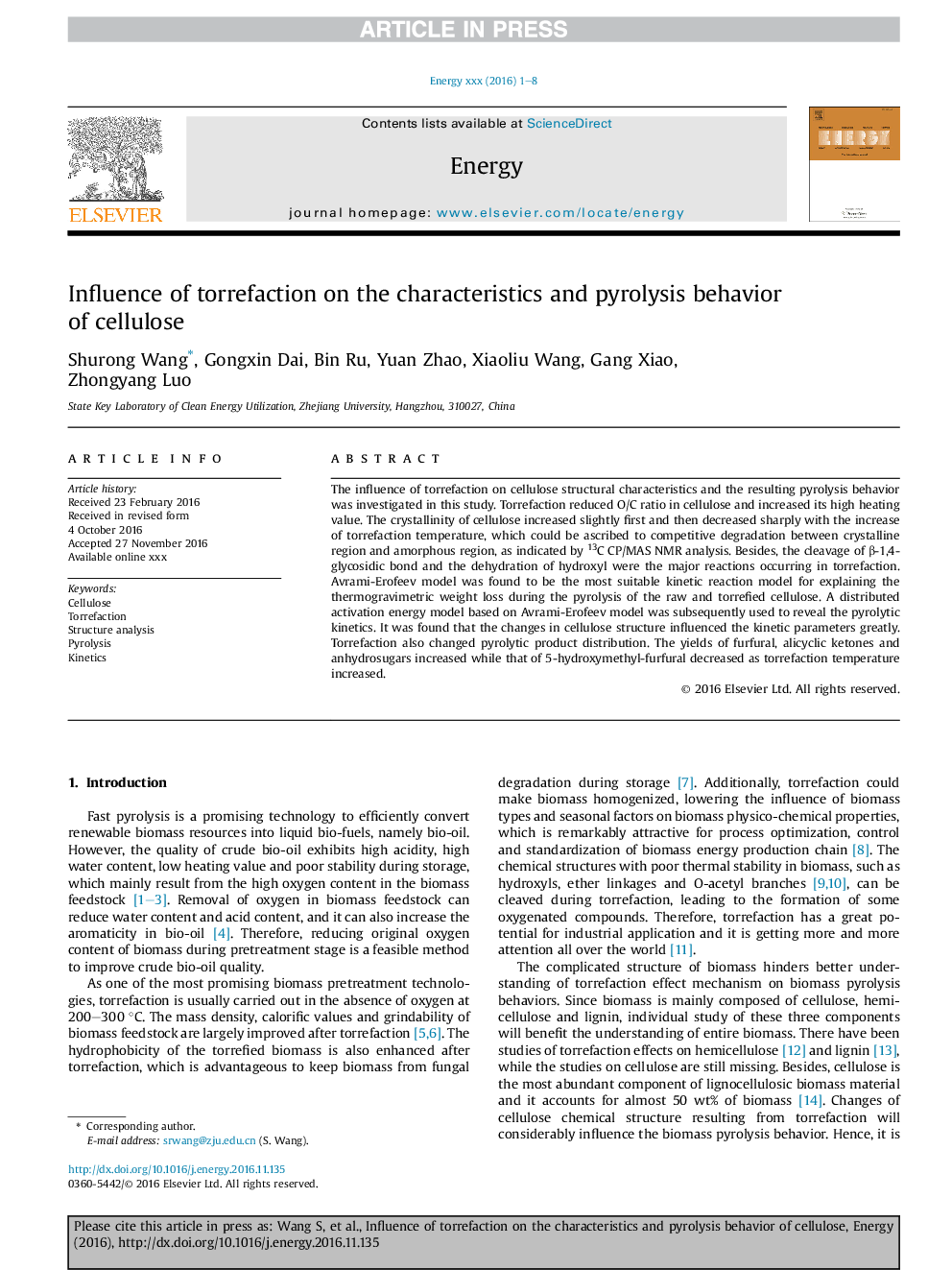| Article ID | Journal | Published Year | Pages | File Type |
|---|---|---|---|---|
| 5476212 | Energy | 2017 | 8 Pages |
Abstract
The influence of torrefaction on cellulose structural characteristics and the resulting pyrolysis behavior was investigated in this study. Torrefaction reduced O/C ratio in cellulose and increased its high heating value. The crystallinity of cellulose increased slightly first and then decreased sharply with the increase of torrefaction temperature, which could be ascribed to competitive degradation between crystalline region and amorphous region, as indicated by 13C CP/MAS NMR analysis. Besides, the cleavage of β-1,4-glycosidic bond and the dehydration of hydroxyl were the major reactions occurring in torrefaction. Avrami-Erofeev model was found to be the most suitable kinetic reaction model for explaining the thermogravimetric weight loss during the pyrolysis of the raw and torrefied cellulose. A distributed activation energy model based on Avrami-Erofeev model was subsequently used to reveal the pyrolytic kinetics. It was found that the changes in cellulose structure influenced the kinetic parameters greatly. Torrefaction also changed pyrolytic product distribution. The yields of furfural, alicyclic ketones and anhydrosugars increased while that of 5-hydroxymethyl-furfural decreased as torrefaction temperature increased.
Related Topics
Physical Sciences and Engineering
Energy
Energy (General)
Authors
Shurong Wang, Gongxin Dai, Bin Ru, Yuan Zhao, Xiaoliu Wang, Gang Xiao, Zhongyang Luo,
